Serge Lifar's Business Card
.This is the Serge Lifar's Business Card with authograph notes to the Countess A.L. Pecci-Blunt. A message of greetings from the ballet master Serge Lifar (Kiev, 1905, Lausanne 1986) to the great patron of arts, Countess Pecci-Blunt (Rome, 1885 - Marlia, 1971).
On letterhead paper " Serge Lifar Maître de Ballet du Théâtre National de l'Opéra.
In French. Perfect conditions, including original envelope. Undated, between 1930-1944.
Collect this unique piece of the Russian Balletts history!
The background:
At the death of Diaghilev in 1929, the Russian dancers Boris Kochno and Serge Lifar tried to hold the Ballets Russes. During the same year Lifar was invited by Jacques Rouché to take over the directorship of the Paris Opéra Ballet , which had fallen into decline. Lifar gave the company a new strength and purpose, initiating the rebirth of ballet in France, and began to create the first of many ballets for that company.These were immediately successful, such as Les Créatures de Prométhée (1929), a personal version of Le Spectre de la rose (1931); and L'Après-midi d'un faune (1935); Icare (1935), with costumes and decor by Picasso; Istar (1941); and Suite en Blanc (1943), which he qualified as Neoclassical ballet . For this reason he was called the new Icare at the Opera Theatre in Paris.
This is the Serge Lifar's Business Card with authograph notes to the Countess Pecci-Blunt. A message of greetings to the great patron of arts, loved and known in Paris . On letterhead paper " Serge Lifar Maître de Ballet du Théâtre National de l'Opéra.
In French. Perfect conditions, including original envelope. Undated, between 1930-1944.
Collect this unique piece of the Russian Balletts history!
The background:
At the death of Diaghilev in 1929, the Russian dancers Boris Kochno and Serge Lifar tried to hold the Ballets Russes. During the same year Lifar was invited by Jacques Rouché to take over the directorship of the Paris Opéra Ballet , which had fallen into decline. Lifar gave the company a new strength and purpose, initiating the rebirth of ballet in France, and began to create the first of many ballets for that company.These were immediately successful, such as Les Créatures de Prométhée (1929), a personal version of Le Spectre de la rose (1931); and L'Après-midi d'un faune (1935); Icare (1935), with costumes and decor by Picasso; Istar (1941); and Suite en Blanc (1943), which he qualified as Neoclassical ballet . For this reason he was called the new Icare at the Opera Theatre in Paris.
Serge Lifar (Kiev, 1905, Lausanne – 1986)
Serge Lifar was a French ballet dancer and choreographer of Ukrainian origin, best-known as one of the greatest male ballet dancers of the 20th century. Not only a dancer, Lifar was also a choreographer, director, writer, theoretician about dance. As ballet master of the Paris Opera from 1930 to 1944, and from 1947 to 1958, he devoted himself to the restoration of the technical level of the Paris Opera Ballet, returning it to its place as one of the best companies in the world. He made his debut at the Ballets Russes in 1923, where he became the principal dancer in 1925.
At the death of Diaghilev in 1929, Lifar was invited by Jacques Rouché to take over the directorship of the Paris Opéra Ballet , which had fallen into decline. Lifar gave the company a new strength and purpose, initiating the rebirth of ballet in France, and began to create the first of many ballets for that company.These were immediately successful, such as Les Créatures de Prométhée (1929), a personal version of Le Spectre de la rose (1931); and L'Après-midi d'un faune (1935); Icare (1935), with costumes and decor by Picasso; Istar (1941); and Suite en Blanc (1943), which he qualified as Neoclassical ballet . For this reason he was called the new Icare at the Opera Theatre in Paris.
Countess Anna Laetitia Pecci (Rome, 1885 - Marlia, 1971)
Better known as Mimì, the Italian noblewoman was an art collector, patron and nephew of Pope Leo XIII. Extremely volcanic, she was very active in the cultural field, opening numerous lounges, galleries and theaters. In 1919 she married Cecil Blumenthal, later changed to Blunt, a wealthy Jewish banker from New York, heir to an important collection of nineteenth-century French painting. His Parisian and Roman salons was frequented by artists and intellectuals of the caliber of Salvador Dalì, Paul Valery, Poulenc, Paul Claudel and dancer like Serge Lifar.
| SKU | M-112626 |
|---|---|
| Artista | Serge Lifar |
| Periodo | 1930s |
| Conditions | Excellent (perfect conditions, as new) |
| Writer/Sender | Serge Lifar |
| Year | 1930-1944 |
| Year | 1930-1944 |
| Format | In-32° |
| Conditions | Excellent |
| Dimensioni (cm) | 11 x 0.1 x 15 |
-
 No1.000,00 €
No1.000,00 € -
 Mythological Scene280,00 €
Mythological Scene280,00 € -
 Portrait400,00 €
Portrait400,00 € -
 Wicker chair250,00 €
Wicker chair250,00 € -
 Offering650,00 €
Offering650,00 € -
 Fairies300,00 €
Fairies300,00 € -
 Figure300,00 €
Figure300,00 € -
 Dionysus, Ancient Roman Statue580,00 €
Dionysus, Ancient Roman Statue580,00 € -
 Woman at Rest225,00 €
Woman at Rest225,00 € -
 Tout est Dada600,00 €
Tout est Dada600,00 €



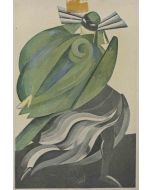



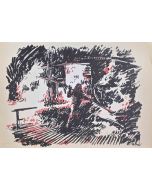

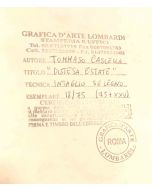

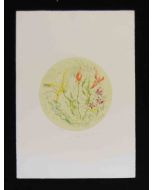

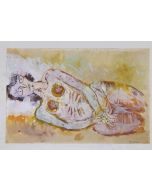


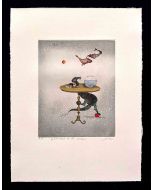

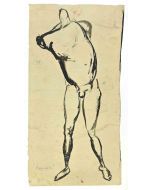


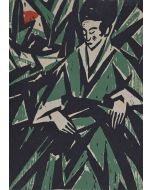

Validate your login
Accedi
Creare un nuovo account